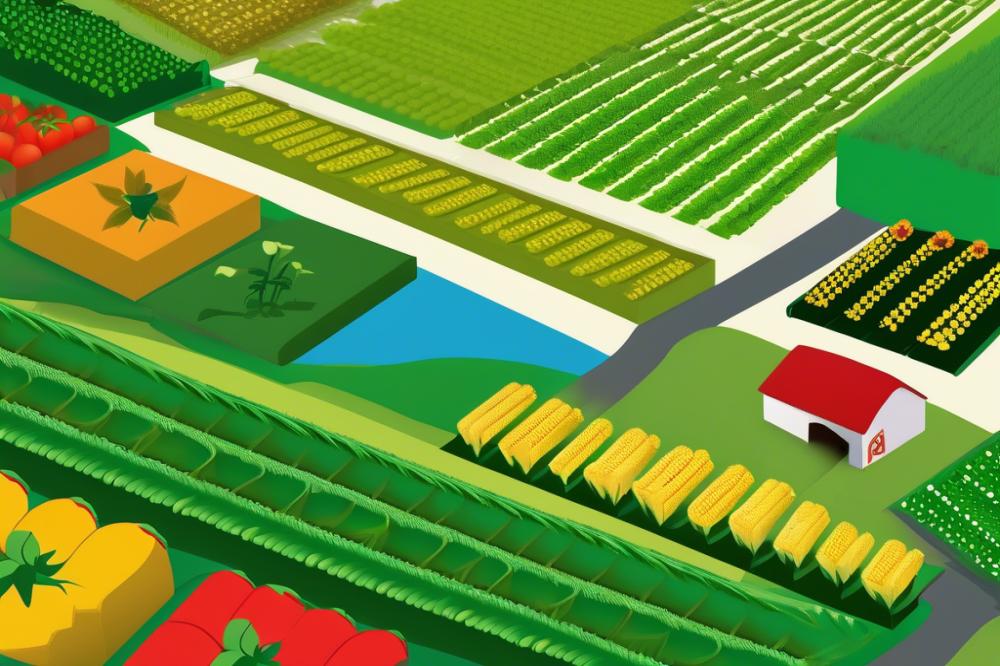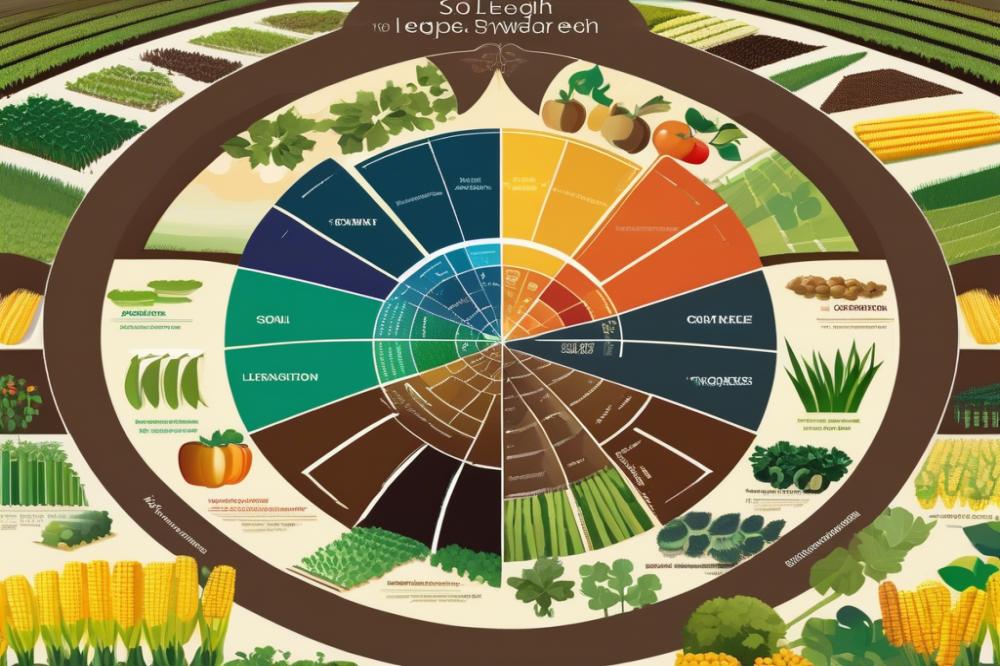The Environmental Benefits of crop rotation Practices
crop rotation is a farming practice that involves alternating different types of crops in the same area over various seasons. This technique plays a significant role in agriculture by enhancing the health of the soil and promoting crop diversity. Farmers often use this method to tackle various challenges, such as pests, diseases, and soil nutrient depletion. In doing so, they can boost overall productivity while reducing the need for chemical fertilizers and pesticides.
Our world faces numerous environmental issues stemming from farming practices. Conventional agriculture, which often relies heavily on monoculture, leads to soil degradation and reduced biodiversity. Over time, these practices result in nutrient depletion and harmful pests that require increased chemical intervention. This creates a cycle of dependency on synthetic inputs, ultimately harming the environment. Erosion control and water conservation become greater concerns as land quality deteriorates.
Implementing sustainable practices, such as crop rotation, is vital for addressing these issues. By enhancing soil health and nutrient cycling, it promotes a more balanced ecosystem. It also aids in pest management by disrupting the life cycles of pests that thrive on specific crops. This diversity not only protects crops but also fosters a healthier environment for beneficial insects and microorganisms. Embracing methods that support sustainable agriculture is essential for our future. Better agricultural practices can lead to increased environmental sustainability, benefiting both farmers and consumers.
In conclusion, adopting crop rotation serves multiple purposes. It addresses various environmental problems while promoting a healthier and more productive farming system. By understanding and utilizing these practices, we can work toward a more sustainable future for both agriculture and our planet.
Understanding Crop Rotation


Crop rotation involves the practice of growing different types of crops in the same area during sequential seasons. This method contrasts with monoculture, where a single crop dominates the land over consecutive years. By alternating crops, farmers can improve soil health and promote environmental sustainability.
Historically, this approach has roots in ancient agricultural practices. Early farmers recognized that planting different crops could replenish the soil and improve yields. Traditional systems often included a variety of legumes, grains, and vegetables, allowing nutrient cycling to take place naturally. Regions around the world employed these methods long before modern farming techniques emerged.
Types of Crop Rotation Systems
Several different systems reflect the diverse nature of crop rotation. A common one is the simple rotation of two or three crops. This system allows for effective pest management by interrupting pest life cycles. Another effective practice is the use of multi-crop rotations. This involves growing a mix of crops each season. Such diversity enhances biodiversity and reduces disease risk in the field.
More complex rotations might include cover crops. These plants are grown not for harvest, but to protect and enrich the soil. Cover crops aid in erosion control while improving water conservation. Often, farmers integrate cover crops within their regular cycles to enhance the sustainability of their operations.
An organic farming approach often emphasizes crop rotation as a key strategy. This method enhances soil fertility without the use of synthetic fertilizers. By rotating crops, farmers can create a balanced ecosystem that supports beneficial insects and reduces reliance on chemical pesticides.
Overall, the environmental benefits of diverse planting patterns are immense. Crop diversity leads to an increase in soil organic matter, enhancing overall soil quality. As a result, these practices contribute to healthier ecosystems and help combat climate change. Understanding these systems not only informs agricultural decisions but also fosters a commitment to sustainable farming methods.
Soil Health and Nutrient Cycling
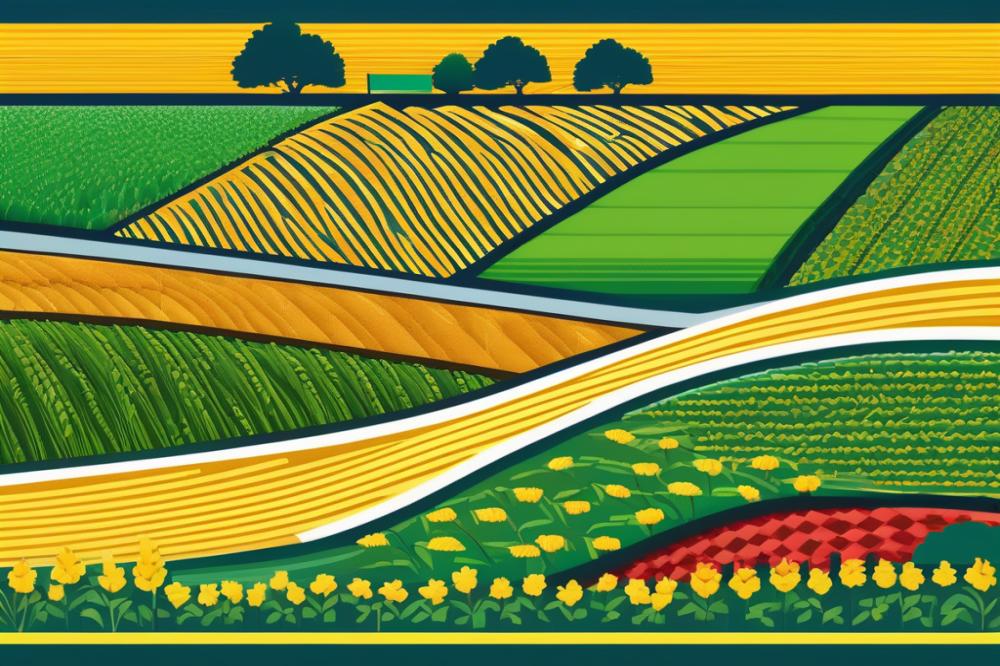

The practice of rotating crops can significantly improve soil structure and fertility. Different types of plants require varying nutrients. By changing the crops planted in a field, farmers help prevent nutrient depletion in the soil. For instance, legumes, like beans and peas, fix nitrogen in the ground. This can rejuvenate the soil without the need for chemical fertilizers. As a result, soil health gets better over time.
Nutrient cycling plays a key role in maintaining the balance of essential elements in the earth. When crops die and decompose, they return organic matter to the soil. This organic matter is crucial. It enhances soil structure and increases its fertility. In turn, healthy soil can retain water better, which is vital for crops and water conservation.
Crop diversity also promotes biodiversity. Different plants attract various insects and microorganisms. This adds to a thriving ecosystem in farmland. With a variety of crops, there are fewer pests that can wreak havoc. Healthy soil contributes to natural pest management. Therefore, farmers who practice crop rotation find that their yields improve and their need for pesticides decreases.
Moreover, soil erosion can be significantly reduced through these practices. Diverse root systems hold soil in place, preventing it from washing away during heavy rains. Cover crops are often included in rotations, further improving erosion control. This not only protects the topsoil but also helps in building a sustainable farming system.
Maintaining and enhancing organic matter in the soil is critical. Healthy soil teems with life, from earthworms to beneficial bacteria. As these organisms thrive, they break down organic material into nutrients that crops need. This natural process is essential for organic farming and aligns with principles of environmental sustainability.
Biodiversity and Crop Diversity
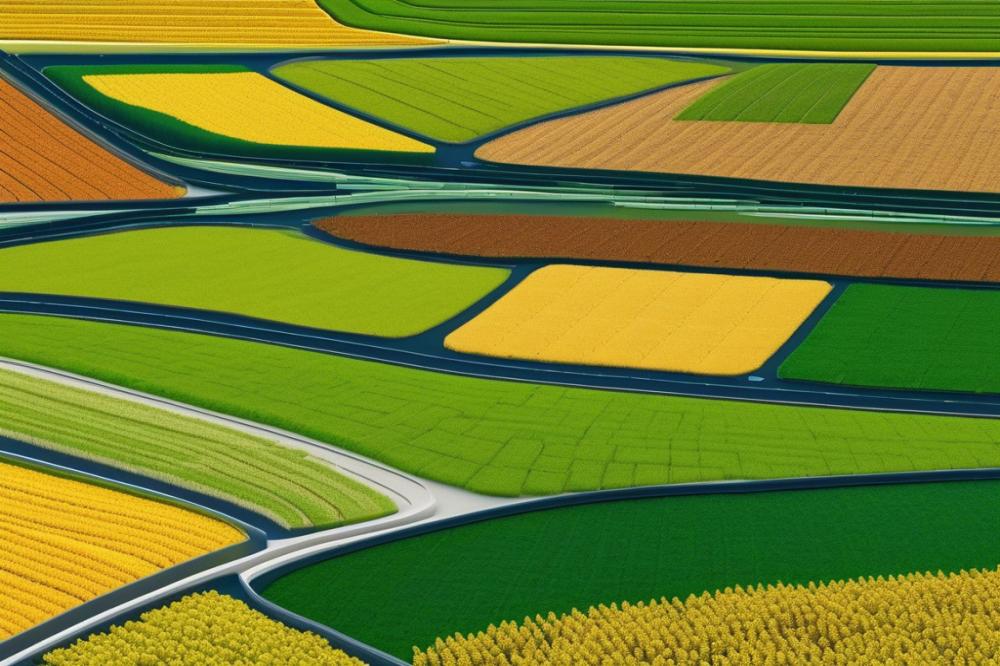

Biodiversity is vital for farming systems. A rich variety of plants, animals, and microorganisms contributes to stronger ecosystems. Diverse ecosystems promote resilience against pests and diseases. This variety can lead to better yields and healthier farming practices.
Crop rotation encourages crop diversity significantly. By alternating the types of crops grown in a specific area, farmers can break up pest cycles. Different plants require different nutrients, allowing the soil to replenish itself. Each crop brings unique benefits, enriching the environment. For example, legumes fix nitrogen in the soil, improving overall soil health.
Benefits of diverse cropping systems extend beyond just food production. Such systems enhance nutrient cycling, which is critical for maintaining fertile land. They help with pest management by providing habitats for beneficial insects. These insects can naturally control pest populations, reducing the need for chemical inputs. Additionally, diverse crops can aid in erosion control by stabilizing the soil with different root structures.
Incorporating various crops leads to improved water conservation. Different plants utilize water in unique ways. Some require more, while others thrive on less moisture. This diversity ensures that the farm can adapt to changing climate conditions. Sustainable farming practices benefit greatly from this approach, promoting both environmental sustainability and long-term agricultural viability.
Organic farming practices often emphasize crop diversity. By fostering a diverse environment, organic farmers enhance biodiversity and improve ecosystem health. Healthy ecosystems are crucial for providing clean air and water. They also play a role in supporting wildlife habitats. Diverse farming systems can produce more resilient crops that can withstand environmental stresses.
Pest and Disease Management
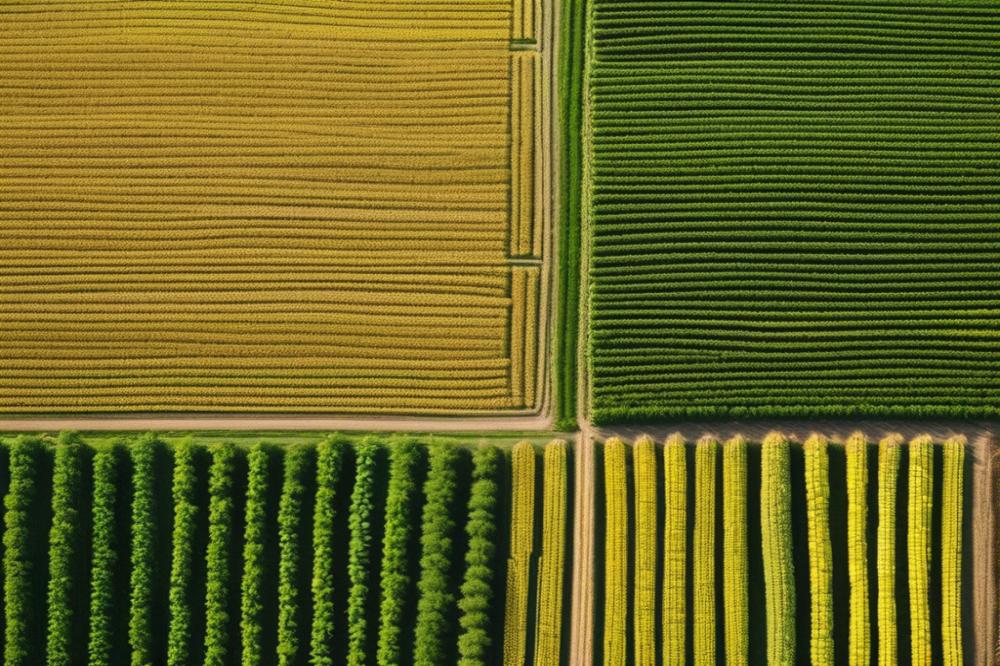

The practice of rotating crops plays a crucial role in pest control. Farmers can naturally reduce the number of pests and diseases by changing the types of plants they grow in a specific area. Monoculture practices, where only one crop is planted year after year, often lead to problems. When the same plants are grown repeatedly, pests and diseases become more prevalent. This often results in the heavy use of chemicals to manage them. Crop variety disrupts these cycles, creating an unhealthy environment for pests. This approach encourages beneficial insects that can also help control harmful species.
Biodiversity improves soil health too. A diverse range of crops can support a wider array of soil organisms, which in turn promotes nutrient cycling. With more organisms in the soil, nutrients become more available to plants. Diseases that thrive on specific crops struggle to adapt when their preferred food source is rotated out. Farmers adopting a sustainable farming approach often notice fewer infestations over time. Healthy soil contributes to strong plants, and strong plants are more resistant to pests and diseases. Erosion control is another benefit. When various plants are grown together, the soil structure improves, which can minimize erosion and maintain moisture.
Compared to monoculture methods, the advantages of crop diversity become clear. Those who engage in organic farming practices often rely on diverse planting to manage pests. Many organic farmers find that by altering their planting schedules and varieties, they can achieve better pest management naturally. Water conservation is another key benefit. Healthier soils retain moisture better, reducing the need for additional irrigation. This practice aligns with environmental sustainability goals, promoting a healthier ecosystem overall.
Erosion Control and Water Conservation
Soil erosion remains a significant threat to agricultural land. Farmers face the risk of losing vital topsoil that supports plant growth. When crops are rotated, the soil structure can improve. This helps hold the soil together better, which decreases the likelihood of erosion.
Cover crops play a critical role in enhancing water retention. These plants shield the soil from heavy rainfall, reducing runoff. As roots penetrate the ground, they create channels for water to seep in. This encourages water conservation, allowing more moisture to remain in the soil during dry periods.
Farmers practicing crop diversity often notice an increase in soil health. Different plants contribute to nutrient cycling, replenishing what the soil needs. This leads not only to healthier crops but also helps maintain a vibrant ecosystem. Biodiversity supports a range of insects and other organisms that can naturally manage pests.
Many sustainable farming methods focus on these practices. Rotating different crops helps break cycles of pests, minimizing the need for chemical pesticides. Organic farming greatly benefits from these strategies. It fosters a more resilient farming system that thrives on natural processes.
Preserving the top layer of soil and capturing moisture are fundamental for environmental sustainability. Planting various crops prevents the soil from becoming depleted. The combination of these practices leads to long-term benefits for both farmers and the environment. This approach creates a more balanced ecosystem that supports future generations.
Environmental Sustainability
Crop rotation plays a significant role in promoting sustainable agricultural practices. Farmers who use different crops in succession can improve soil health. This method helps to maintain nutrient levels, keeping the soil fertile and productive. Healthy soil supports robust plant growth, which is vital for long-term agricultural success.
Biodiversity is another key advantage of rotating crops. By planting a variety of species, farmers can attract beneficial insects and other wildlife. These organisms contribute to pest management by preying on harmful pests. Additionally, a diverse ecosystem can protect against disease outbreaks that may threaten crops. Such diversity in the fields creates a more balanced and resilient farming system.
Nutrient cycling is a vital process that occurs with this agricultural method. Different plants have unique nutrient requirements and contributions. Legumes, for example, can fix nitrogen in the soil, benefiting subsequent crops. This natural process reduces the need for synthetic fertilizers, which can harm the environment if overused.
Water conservation is essential, especially in regions experiencing drought. Crop rotation can improve the structure of the soil, allowing it to better retain moisture. Healthy soil absorbs and holds water more effectively, reducing runoff and erosion. Erosion control contributes to a reduction in loss of topsoil, which is crucial for maintaining fertile land.
Furthermore, the long-term benefits of these practices extend beyond the farm. Sustainable farming methods promote ecosystem health and contribute to climate resilience. Healthy ecosystems are more adaptable to changing weather patterns and extreme conditions. This adaptive capacity is essential as climate change continues to pose challenges to agriculture.
Farmers who engage in organic farming can further enhance environmental sustainability. Organic practices often align closely with crop diversity and thoughtful management of resources. By avoiding harmful chemicals, they support a healthier ecosystem that nurtures the environment. This connection creates a more sustainable cycle of food production.
Final Thoughts on Sustainable Farming Practices
Crop rotation offers a host of environmental benefits that cannot be overlooked. This method helps improve soil health, making it richer and more fertile over time. Additionally, it encourages biodiversity by allowing various plants to thrive in changing conditions. Different crops attract diverse insects and animals, creating a balanced ecosystem.
Modern agriculture calls for innovative practices to tackle challenges like climate change and soil degradation. Traditional farming methods, while effective, often overlook the need for sustainability. In contrast, incorporating rotation techniques delivers lasting benefits while also responding to today’s environmental concerns. Healthy soils support healthier crops, which benefits everyone.
Farmers play a crucial role in this transformation. Adopting these practices isn’t only beneficial; it’s essential for a healthier planet. Each farm can contribute to a larger solution that promotes ecological balance. By choosing to implement these methods, producers can ensure the future of agriculture remains vibrant and productive.
Take action today by exploring how these techniques can fit into your farming strategy. Many resources are available to guide you in making this change. A small step toward rotation can lead to significant environmental improvements, fostering a sustainable way of life for generations to come.


